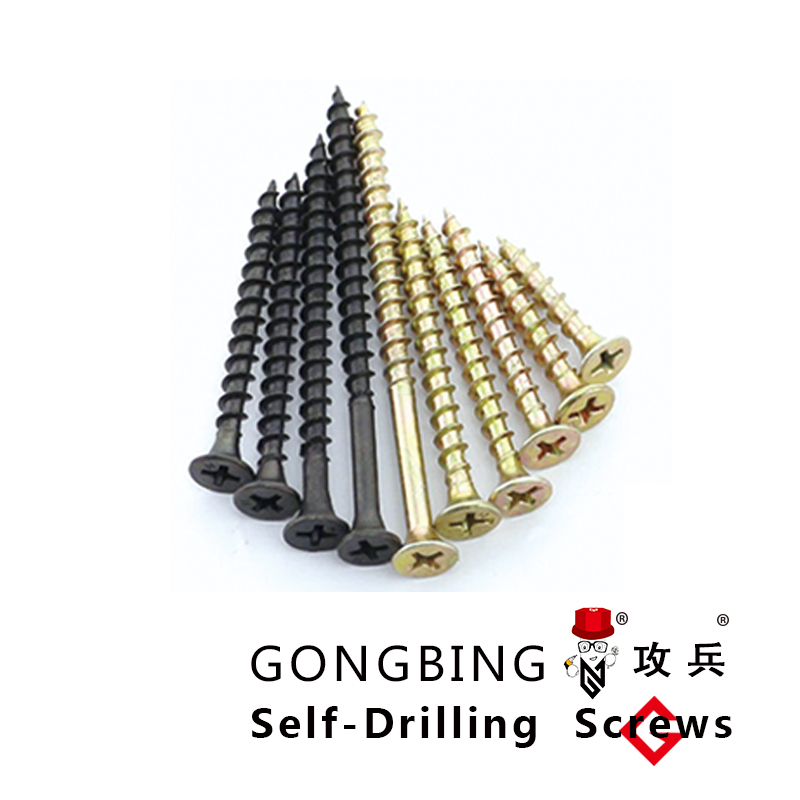stainless steel self drilling screws for metal
Stainless Steel Self-Drilling Screws for Metal An In-Depth Look
In the realm of construction and manufacturing, fastening materials securely is paramount to ensuring structural integrity and longevity. One of the most innovative solutions that has emerged in recent years are stainless steel self-drilling screws, particularly for metal applications. This article delves into what makes these screws a favored choice, their advantages, and the considerations to keep in mind when using them.
Understanding Self-Drilling Screws
Self-drilling screws, also known as Tek screws, are engineered with a drill point at the tip, allowing them to create their own holes when driven into materials. This innovation eliminates the need for pre-drilling, making the installation process significantly faster and more efficient. Stainless steel is the material of choice for these screws due to its corrosion resistance, strength, and aesthetic appeal.
Advantages of Stainless Steel Screws
1. Corrosion Resistance Stainless steel is renowned for its excellent resistance to rust and corrosion, making self-drilling screws an ideal choice for outdoor and industrial applications. They withstand harsh weather conditions, chemicals, and moisture, ensuring that fasteners remain secure over time.
2. Strength and Durability The physical properties of stainless steel provide high tensile strength, meaning these screws can endure significant force without snapping or bending. This is particularly crucial in environments where structural integrity is key.
3. Cost-Effectiveness Although the initial cost of stainless steel self-drilling screws may be higher than other materials, their longevity and durability often justify the investment. By minimizing maintenance and replacement costs, these screws can offer a more cost-effective solution in the long run.
4. Ease of Use As mentioned, the self-drilling feature dramatically simplifies the installation process. This not only saves time but also reduces labor costs, allowing for quicker project completion.
Applications
Stainless steel self-drilling screws are versatile and can be utilized in various applications, including
stainless steel self drilling screws for metal

- Roofing They are commonly used in metal roofing systems due to their ability to securely fasten sheet metals while providing resistance to leaks and weather-related damage. - Metal Fabrication In manufacturing settings, these screws are invaluable for assembling components made from various metals, ensuring that joints are both strong and durable.
- HVAC Systems They are frequently employed in heating, ventilation, and air conditioning installations, where metal ducts must be securely and efficiently fastened.
Considerations for Use
When selecting stainless steel self-drilling screws for a project, several factors should be considered
1. Material Compatibility Ensure that the screws are suitable for the specific type of metal being used. Different metals may require specific screw grades and coatings.
2. Screw Size and Length The choice of size and length is critical to ensure the screws will embed properly in the material without protruding too far or being too short to provide adequate fastening.
3. Heat Resistance In applications involving high temperatures, specify screws designed to withstand thermal expansion and contraction to prevent failure.
4. Installation Techniques Proper technique and tools should be utilized for installation, including the correct drill speed and pressure, to ensure that the screws penetrate without stripping or damaging the material.
Conclusion
In summary, stainless steel self-drilling screws offer a reliable, durable, and efficient fastening solution for metal applications. Their ability to resist corrosion, combined with the ease of installation and long-term performance, makes them an invaluable choice in both construction and manufacturing. By understanding their advantages and best practices for use, builders and engineers can leverage these innovative fasteners to enhance the quality and longevity of their projects.
-
Weatherproof Plastic Expansion Anchors for OutdoorNewsJun.06,2025
-
Sustainability in the Supply Chain: Eco-Friendly TEK Screws ProductionNewsJun.06,2025
-
Load-Bearing Capacity of External Insulation FixingsNewsJun.06,2025
-
Double Head Bolts: Enhancing Efficiency in Industrial MachineryNewsJun.06,2025
-
Corrosion Resistance in Chipboard Screws: Coatings for Wholesale DurabilityNewsJun.06,2025
-
Butterfly Toggle Bolts : Enhancing Structural ResilienceNewsJun.06,2025
